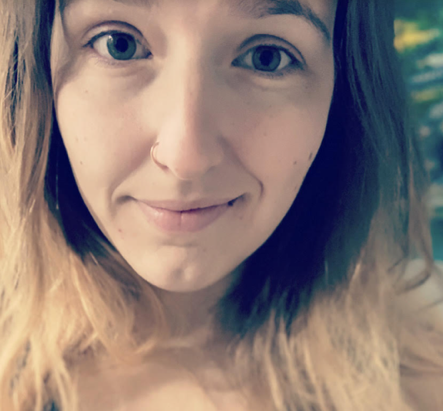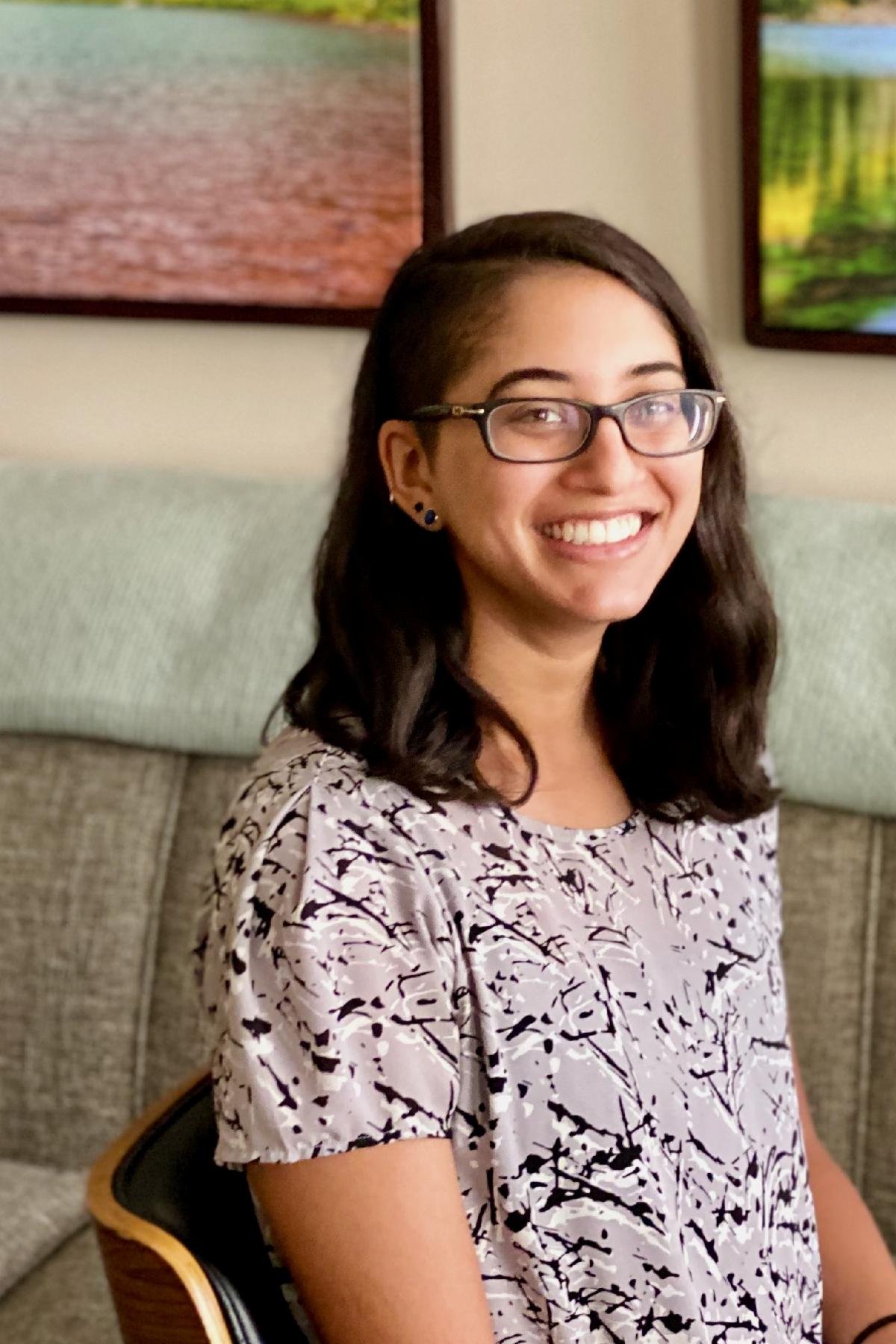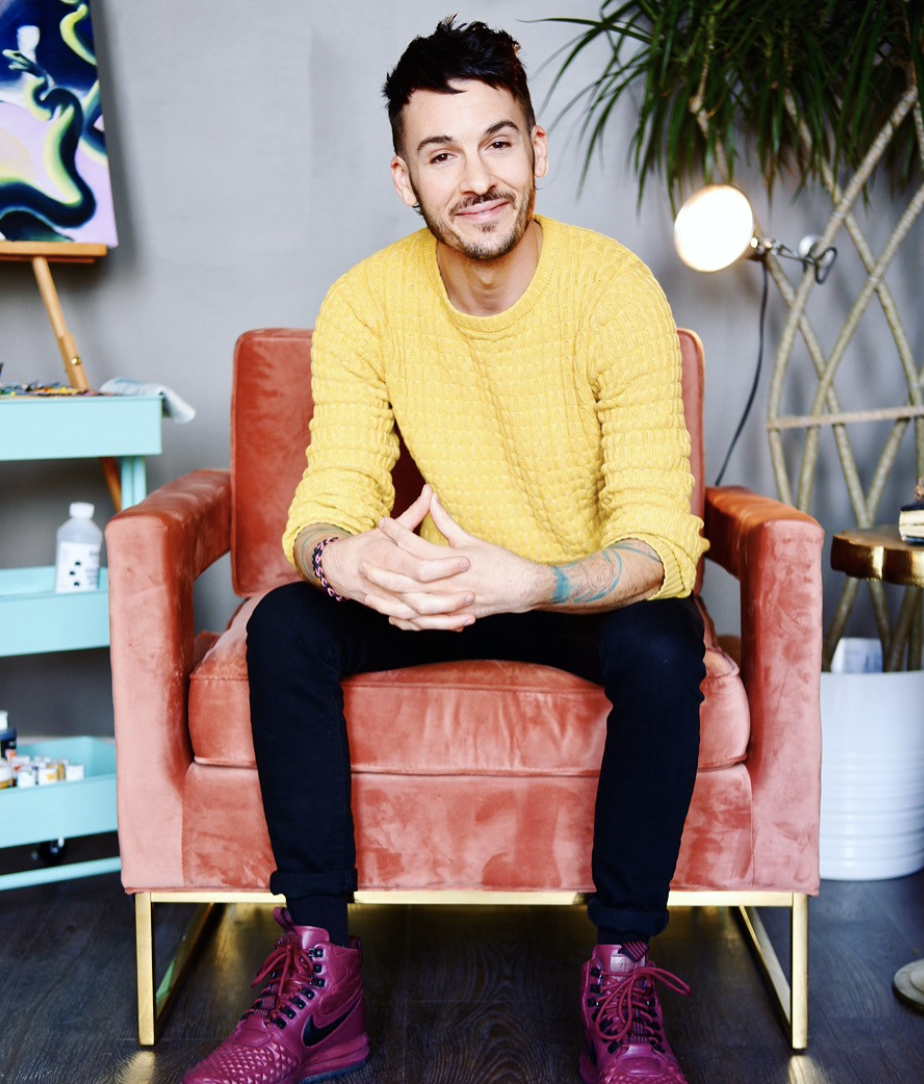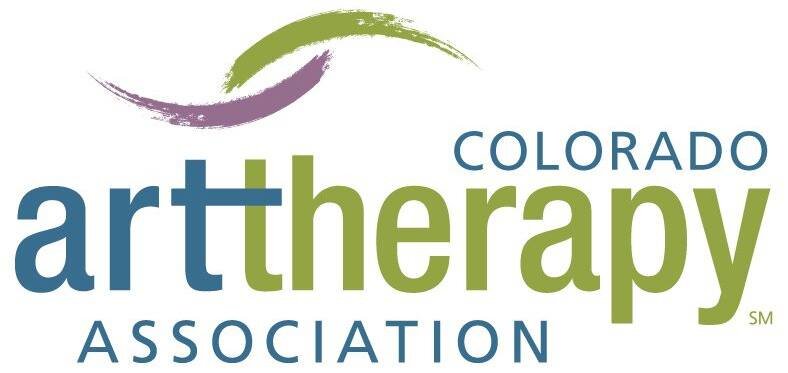
Colorado Art Therapists in the Spotlight
-

Kristel Phelps, MA, LPC, ATR
Fall 2023 Interview
Can you talk about the power of Art Therapy in your life and your work?
Art-making has always been my way to express myself whether it be through clay, photography, or painting. Blank Canvas Art Therapy is entirely online, and I have found, time and time again, how much clients can take away from an Art Therapy experience even if it is through a tele-health platform. We typically use materials that are already in a client’s home, and while this can limit their access to materials, I have found that the clients who get heavily involved with the creative process will often purchase additional materials to use in session. Those who do not purchase additional supplies still benefit from using pen and paper, visual metaphors, and photographs. I am grateful for the opportunity to serve others through the art process and offer them a powerful tool to process experiences and emotions.
-

Amanda Holst, LAC, LPCC, ATR-P
Summer 2023 Interview
Can you talk about the power of Art Therapy in your life and your work?
I work with youth that are involved in the criminal justice system and they have often been misunderstood and mistreated by authority and may not be trusting of others. Correspondingly, they can be hesitant to open up and engage in therapy. Art Therapy has been incredibly helpful to break through any hesitancy as it provides a less threatening way for youth to process their difficult feelings and experiences. Through art making, these youth have been given the opportunity to release their feelings into outer art forms for further exploration. This seems to ease any defensiveness and vulnerability as we’re able to reflect on their feelings through the artwork and metaphoric expression rather than on their feelings directly.
-

Kate King, LPC, ATR-BC
Spring 2023 Interview
Are you working on anything now that you’re really excited about?
I am really excited about my new book, “The Radiant Life Project: Awaken Your Purpose, Heal Your Past, and Transform Your Future”. The book is a massive love bubble I am sending out to the world and I want it to reach a lot of people. The book combined with my new group retreat and public speaking offerings are fresh and exciting dimensions of my business these days.
Incorporating new ways of sharing my work feels quite different than the private practice model I am used to, so it feels like a big growth spurt and I am excited for the next chapter. It really feels like the sky's the limit and I don’t know where the edges are! I am following the breadcrumbs and thinking of life as being filled with infinite possibilities. As I navigate my new business platform, I look for somatic messages from my body that feel like a ‘yes’ to help me align with my healer’s purpose and detach from my busy brain. There are always so many opportunities and possibilities, and it seems important that I allow myself to be flexible and adaptable so that I can continue to serve from an inspired and resourced state of being.
-

Leara Glinzak, ATR-BC, MSAT
Winter 2023 Interview
How can Art Therapy or art be used for social justice?
Art Therapy has been used in responding to social injustices. Since art goes beyond words, it can become a voice to enhance advocacy. I am reminded of Wayne Ramirez’s work in responding to collective trauma and the presentation I attended by Elia Khalaf and Deanna Barton (AATA Conference in 2021) facilitated by Blooming Names in response to honoring the lost lives of Black and Brown persons due to police and gun violence.
Additionally, we see Art Therapy become a response for education as a visual to events such as memorials, murals, etc. as a space to bring awareness, voice, and honor.
-

Kerry Jessup, LPC, ATR-BC
Fall 2022 Interview
Can you talk about the power of Art Therapy in your life and your work?
I feel incredibly grateful to be in my current job at the Marcus Institute for Brain Health, which is located on the CU Anschutz Medical Campus. Three years after graduating from NYU I experienced burnout and left New York. Ever since moving to Colorado I have worked exclusively as an Art Therapist. I don’t dread Mondays, I love what I do, and I feel that I gain just as much healing as I give to my patients.
-

Madi Musson, (She-They// Ella- Elle) - MA, LMFT, ATR-BC, EXAT Candidate
Summer 2022 Interview
Can you tell us about your academic journey?
I went to undergraduate at a program that had a Bachelor’s level certificate in Art Therapy- kind of an intro to the field- under my mentor Dr. Roberta Victor. I was then able to attend graduate school at Antioch University in Seattle, where I chose to focus on Art Therapy and Family Systems. In that program I completed specialized coursework in the areas including trauma, loss, and grief. I was also able to provide Art Therapy services as an intern at a community mental health agency and a hospital supporting people across the lifespan from infancy to the aging.
-

Linda Sweeney, MA, LPC, LAC, ATR
Winter 2022 Interview
Can you talk about the power of Art Therapy in your life and your work?Creativity has been a part of my life since I was very young-both mine and, by osmosis, my family’s. Art continues to be a huge part of my family to this day and has been embraced by my sons and grandchildren. It wasn’t until I started my master’s degree that I truly felt the power and importance of art in my life.
Understanding more about the power of the process rather than the final product continues to be a healing principle. For many of the clients I work with art becomes a voice they did not know they had. The power of the art never ceases to amaze me.
How have your professional collaborations benefited your career?
These collaborations have lead to an exchange of ideas, resources, ways to use the art with clients, opportunities to learn from others experiences and to see options from different perspectives. Collaborations with professionals who are not Art Therapists also provide an opportunity to educate and provide a forum to utilize the art in a variety of settings. Professional collaborations can also benefit the client for more options and wrap around services.
-

Sneha Gaikwad, LPC, ATR-BC
Fall 2021 Interview
How is/can Art Therapy or art used for social justice?
I don’t currently see Art Therapy being used for social justice frequently. I think Art Therapists are so exhausted trying to make ends meet that it is difficult to engage in social justice community work as well, specifically for BIPOC Art Therapists.
Within the therapy room, Art Therapy needs to be decolonized the same way we are decolonizing other systems within the mental health profession such as documentation, professionalism, and client/therapist power dynamics. Art Therapy and other mindfulness therapies often appropriate eastern cultures without thinking any harm is being done. On a micro level, these are ways in which Art Therapy can approach social justice before even starting to work with people who are extremely traumatized by oppression.
As Art Therapists, we understand the innate empowering experience of creating. On a systemic level, we also need to acknowledge that for many people that is not enough, and that is not going to create systemic changes.
-

Evan Honerkamp, MA, LPC, ATR
Summer 2021 Interview
What are some important self-care practices you recommend or practice?
Some of my favorite practices are yoga for stretching and healing my body, painting with oils, playing video games, baking (and hoping I don’t blow up the kitchen -I’m not very good at it), talking to a long-distance friend, and going to see live comedy. Both my personal and professional self benefit from consistent self-care -they remind me I am human, I have limits, and I am worthy of self-love. I feel connected to integrity when I practice self-care disciplines while supporting my clients to practice their own; so, what I recommend, I also practice. If I support clients in taking some needed time off work, reengage an old friend, disconnect from screens at the end of the day, have soothing smells, tactiles, or music available -I make sure I tend to my self-care routines as well. There is also a growing understanding for me of how “hustle culture” and working ad nauseam is connected to white supremacy values, so if I take breaks to assess the pace and quality of my work and my being, I believe I can also positively influence my clients, my officemates, my community, etc. "Where is my inherent worth that is not attached to gain, accumulation, growth, or progress?" is a powerful question that I continue to ask myself.
-

Susan Jacobsen, LPC, ATR-BC
Spring 2021 Interview
From your point of view, what is the most important thing to keep in mind when working as an Art Therapist?
There are many important things to keep in mind when working as an Art Therapist, but one that stands out to me is to be aware of the power of images. They can be incredibly healing when the timing is right but they can also be overwhelming and triggering if not handled with care and expertise.
Can you talk about the power of Art Therapy in your life and your work?
I truly believe that art allows us access to deep healing for ourselves and our clients. I love the way in which it allows us to experience memories and process emotions in a whole brain way. I find it to be a richer experience for clients when I use art with them. I have also used art extensively for processing my own life experiences, including the loss of my son.
-

Valerie Epstein-Johnson, LPC, ATR-BC
Winter 2021 Interview
How would you like to see the field of Art Therapy evolve in the coming years?
I would like to see somatic, trauma-informed interventions incorporated into Art Therapy and Art Therapy education more consistently across populations and clinical issues. This is the future of mental health care and deserves to be embraced by our field. We also need to be a visible, committed part of the movement to be a fully inclusive society with truly equal opportunity for all. In doing our part to help dismantle systemic bias and discrimination, we need to diversify our field and find ways to connect clients of all backgrounds with Art Therapy. I would like to see Art Therapy programs recruit BIPOC and LGBTQ+ professors and students, and agencies and Art Therapists in the field do what they can to increase representation in clinical settings and reach underserved populations. I would also like to see Art Therapists licensed in every state in the U.S. and our modality treated as the profession it is by state regulatory bodies and insurance companies.
-

Annie Mell, LPC, ATR-BC
Fall 2020 Interview
From your point of view, what is the most important thing to keep in mind when working as an Art Therapist?
It is important to remember that you are making a difference even if things feel slow in sessions or people are not respecting the boundaries of Art Therapy. Do your process with your client and trust yourself.
How would you like to see the field of Art Therapy evolve in the coming years?
I would like to see continued growth in the respect for Art Therapy among healthcare facilities. I have first hand experience of Art Therapy being treated as though it is not a priority while other groups are given more resources. It would be wonderful to give more in-services and show more of the science behind the power of Art Therapy.
-

Kate King, MA, LPC, ATR-BC
Summer 2020 Interview
Do you see transpersonal elements manifest in your professional work?
I believe that Art Therapy is inherently transpersonal because it accesses intuitive layers within the psyche and collective unconscious in a way that feels personalized and safe for each individual. Specifically, though, my nature as a therapist (and personally) is deeply spiritual and transpersonal. Many of my clients come to work with me because they are willing and ready to take a deep-dive into themselves. I see my therapist role as providing guiding support for my clients to uncover long forgotten, hidden, or unconscious aspects of their suffering that keep them from living the BIG life they came here to live. My clients will often discover their own unique spiritual path and deepen into the sacred elements of their very existence and interconnectedness with all things.
-

Nissa Jackman, LMFT, ATR-BC
Winter 2020 Interview
From your point of view, what is the most important thing to keep in mind when working as an Art Therapist?
It’s important to remember that in addition to the reverence we have for the artwork itself, the art is just as important as any other document created. Confidentiality, privacy, maintenance and storage, all of that applies to the art as well.
What originally drew you to the field of Art Therapy?
I had never heard of Art Therapy until a friend of mine told me that their mother was an Art Therapist. I thought, “What?! This is a real thing?” While working as an Early Intervention Behavioral Therapist for children on the Autism Spectrum, I kept thinking there was more that needed to be done for the families. Certain needs were not being met and that inspired me to look for a program as a therapist. It was serendipitous that there was an MFT and Art Therapy program where I was living at the time. I went to Notre Dame de Namur University for my degree out in Belmont, CA.
-

Jessica Whitesel, MA, LPC, ATR-BC
Fall 2019 Interview
Can you tell us about the journey to Naropa University?
“I entered Naropa without any career understanding of what Art Therapy was. I went there with a naive interest in wanting to help people and use art to do it. In art school, I think I had always used the art process inherently for my own healing (which may be true for a lot of artists, but some more than most). While I was in art school, developing my own voice and identity, I was really using the art for my own growth and healing which was counter to the philosophy and approach I found in art school. The two art worlds collided at that point to steer me into the direction of Naropa.”
-

Amy K. Leiter, LPC, ATR-BC
Summer 2019 Interview
From your point of view, what is the most important thing to keep in mind when working as an Art Therapist?
When I was at Naropa, one of the things that always stuck to me, being able to sit and hold space as a human being in the room with someone. What separates us from other types of therapists is that we are willing to be creative and flexible. Ms. Leiter expressed that it does not matter the setting, what matters is “how we present the materials, hold the space, and the rest is kind of trusting the process.” One of the most important pieces to keep in mind could be just small reminders of the kind of therapist she strives to be. Ms. Leiter shared, “being able to show up, be creative, and flexible is what holds and creates the space for healing to happen.”
-

Shauna Perry, LPC, ATR-BC
Fall 2016 Interview
What makes Art Therapy unique as a profession?
Art Therapists have specialized training in understanding how art is the projection of the internal dialogue. We know about the use of materials, ethics of sharing art, and we respect the image being the third entity in the room. We are skilled at noticing the use of materials and being witness to the narrative quality of the art. I think Art Therapists are also able to sit with a lot; including conflict, and intense catharsis, which is not always verbal. During my career thus far I have had the opportunity to practice Art Therapy methods with diverse populations in multiple different settings, I wasn’t always hired as an “Art Therapist” per se, but I have found creative ways to integrate the art process into my work to meet the unique needs of the clients in culturally appropriate contexts.
-

Lola Clark, MA Candidate in Art Therapy
Spring 2016 Interview
No photo available of Lola Clark.
Image by: Enzo TommasiWhat advice do you have for prospective Art Therapy students?
Pay attention. Ask questions. As Michael would say, “be a good observer” of yourself, your clients, and the images created. Be confident in yourself and what you’ve learned. Find where you’re contracted and relax. Have your own excellent therapist. Look at as much art as you can in supervision. Make as much art as you can. Take good care of yourself.
-

Tisha Adams, Ed, LPC, ATR-BC
Winter 2015 Interview
In addition to your academic and professional career in Art Therapy, you are also an educator. What parts of your journey have been most satisfying?
It is funny how things unfold in our lives. I don’t ever remember not feeling satisfied with what I was doing. I always felt like my Art Therapy career has been organic as it has been unfolding in front of me; during the process I have been present for opportunities in my life, my work, and my education. My introduction into the field happened naturally I did not do extensive research or questioning. I often say that I have tripped and fallen into many of the things I have had the privilege of doing. Although I have some awareness that I have been open to taking risks and taking advantage of opportunities that have come my way. For example, after graduate school while working with kids with medical issues I realized that I could use art to help kids develop fun and creative visual tools that worked to organize their complex medication and self-care needs. I wanted to learn more about using creative computer programs to develop visual tools. I marched down to Art Institute of Colorado (AiC) and enrolled. I learned a lot and earned an Associate’s degree in Graphic Design. After graduating from AiC I noticed they had a part time Gen Ed instructor position posted. I applied and was hired. I taught Psychology and Creative Thinking for 13 years to students who were working toward Bachelor degrees in creative careers like culinary, photography, graphic design, interior design, web design, and video production. I loved being around college students and I found my training as an Art Therapist was helpful in the classroom and I became excited about integrating creative teaching models, activities, and assignments into coursework to help the students discover the value of psychology and mental health. I really enjoyed the balance of teaching and providing therapy at Children’s Hospital. My confidence as an educator grew and as an adjunct instructor at AiC was eligible for tuition assistance in obtaining a Doctorate...I decided to go back to school. Low and behold, I completed a Doctoral degree in Counseling, Education, and Supervision in 2014.
-

Michael Franklin, PhD, ATR-BC
Fall 2015 Interview
Can you say more about the transpersonal nature of art making and the power of Art Therapy?
This is perhaps the most exciting and complex question. I just finished a book that will be published with Suny Press in 2016 and the title is likely to be: Art as Contemplative Practice: Expressive Pathways to the Self. It represents 25 years of work. For me, engaging in creative behavior uniquely available through the arts is a way to join with the creator. To create is to sit with the creator and art is a way to answer creation back with creation. I find it very meaningful to pray this way and to explore ineffable, wordless questions. Spirituality is often a wordless, silent subject and art is a trustworthy passport to this still place. Art then becomes a methodology for working from the subtle back to the physical or tangible. And from the physical back towards the subtle emptiness of silence.
I would also say that I am not always so transpersonal - moving beyond the personal. I actually want to move towards the personal and understand ego state relationships. My orientation as an artist, contemplative practitioner, teacher, and therapist blends these perspectives of Hindu/Yoga/Tantra traditions, the depth psychologies, and expressive therapies with the humanistic principles of transpersonal, imaginal, and client centered therapy. As an artist and writer, I focus on integrating the relationships between visual art, social engagement, yoga philosophy, and meditation.
-

Mimi Farrelly-Hansen, LPC, ATR-BC
Spring 2015 Interview
Can you tell us what drew you to the field of Art Therapy?
The arts are humanizing. They are just so much what we are about as people. Visual art in particular continues to be a lifeline for me.
What drew me to the field of Art Therapy was my own need for healing. I had an eating disorder in my twenties and felt out of control in many parts of my life. A friend suggested I get an 18 by 24 newsprint pad and some charcoal and just start “making marks” for 15 minutes a day in my basement. Eventually I accumulated 4 or 5 of these drawing pads and scared myself. The things that were coming through were violent in a way that didn’t match the persona that I had carefully cultivated: nice white girl from a good family goes to a prominent college and grad school – but everything wasn’t fine. I remember taking my stack of drawings to a friend’s counselor since there weren’t any art therapists in Denver in the late 70’s. He assured me that making art was the healthiest thing that had happened to me, like an inner door that was finally able to open. He cared enough to be a good listener and was very helpful as things became more conscious. I didn’t have to manipulate anything and it would all come through, the good, the bad, and the ugly and I came to rely on this method of truth telling. I know that art therapy is powerful and I can offer clients that confidence. As my colleague Bruce Moon is fond of remind.


